At Nubalo Studios S.L., we are specialized in creating scale satellites of space missions, managing the entire design and manufacturing process to ensure precision and authenticity in every detail.
In recent months, we have worked on constructing replicas of Aeolus, Swarm, Cryosat-2, and Euclid for the European Space Agency (ESA), as well as other satellites for NASA. We’ve also enhanced previous versions of missions like Mars Express, Venus Express, Solar Orbiter and Bepicolombo. Our manufacturing process involves the use of UV filters to enhance the quality and realism of satellite textures, giving each a more authentic and detailed appearance. Additionally, we use high-quality materials to ensure durability and resistance.
If you’re interested in having your own scale satellite of a space mission, feel free to contact us through the form available on the SpaceRobotics.EU website. We’d be delighted to assist you in creating a detailed and customized model.
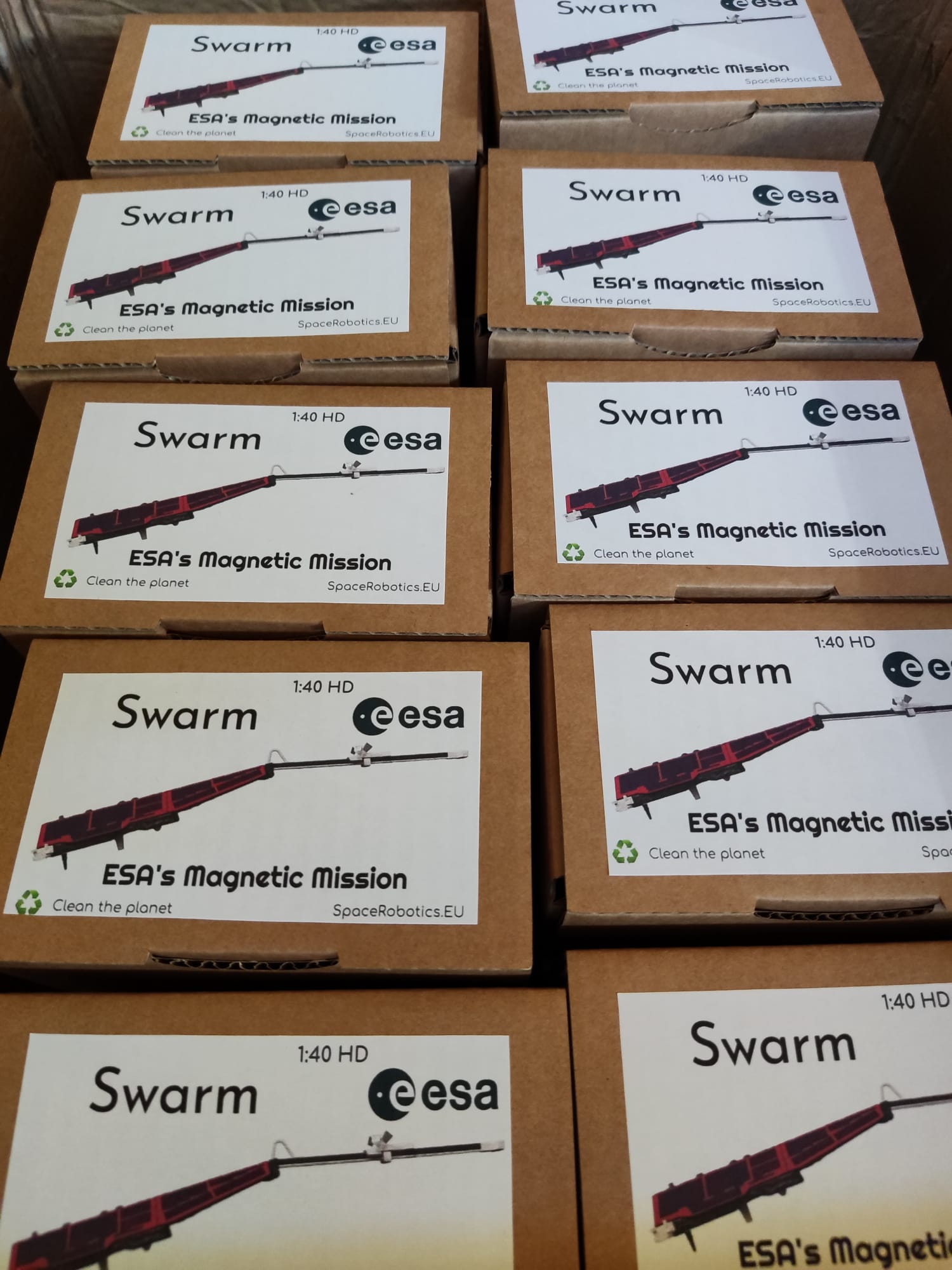
Scale Models of ESA’s Swarm satellite.
Aeolus Satellite
Aeolus is a satellite of the European Space Agency (ESA) designed to measure winds in Earth’s atmosphere from space. Launched on August 22, 2018, from the Kourou launch base in French Guiana, it orbits Earth at an altitude of around 320 km, completing an orbit every 94 minutes.
The satellite has a mass of approximately 1,400 kg and is equipped with a Light Detection and Ranging laser (lidar) named Aladin (Atmospheric Laser Doppler Instrument). Aladin sends a laser beam towards Earth, measuring the speed and direction of wind in our planet’s atmosphere based on particle movement in the air. Aeolus’s collected data is used to enhance meteorological models and predict atmospheric conditions and climate changes. This satellite is expected to have a lifespan of around 3 years.
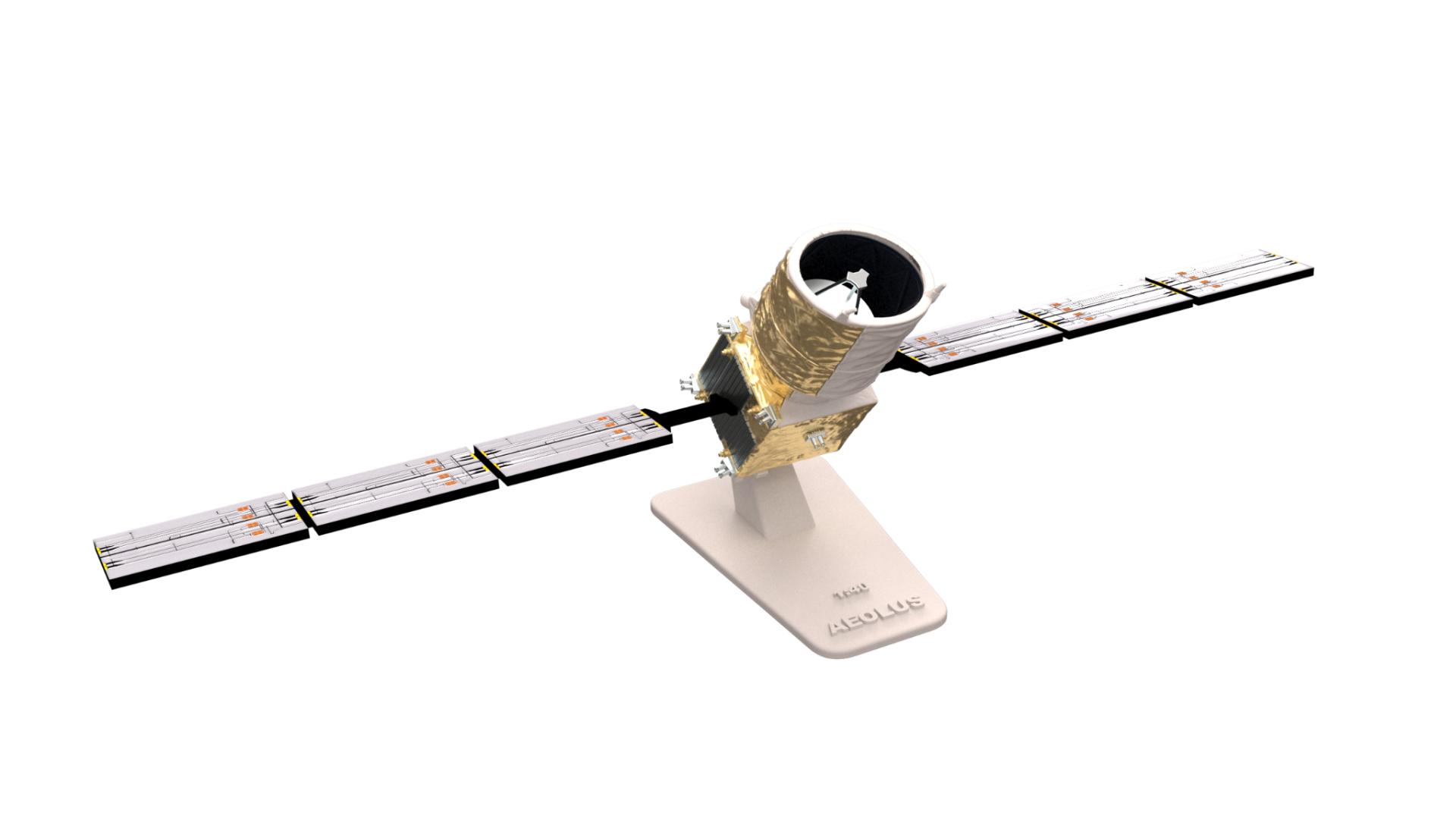
ESA’s Aeolus satellite model.
Swarm Satellite
Swarm is a set of three satellites from the European Space Agency (ESA) designed to measure Earth’s magnetic field from space. Launched on November 22, 2013, from the Plesetsk launch base in Russia, these satellites orbit Earth at an altitude of around 460 km.
Each Swarm satellite has a mass of approximately 300 kg and is equipped with various sensors and instruments to measure the Earth’s magnetic field and its variability over time. The collected data helps understand how Earth is shielded from solar charged particles and how the Earth’s magnetic field is changing due to phenomena such as climate change and solar activity. Swarm satellites are expected to have a lifespan of around 5 years.
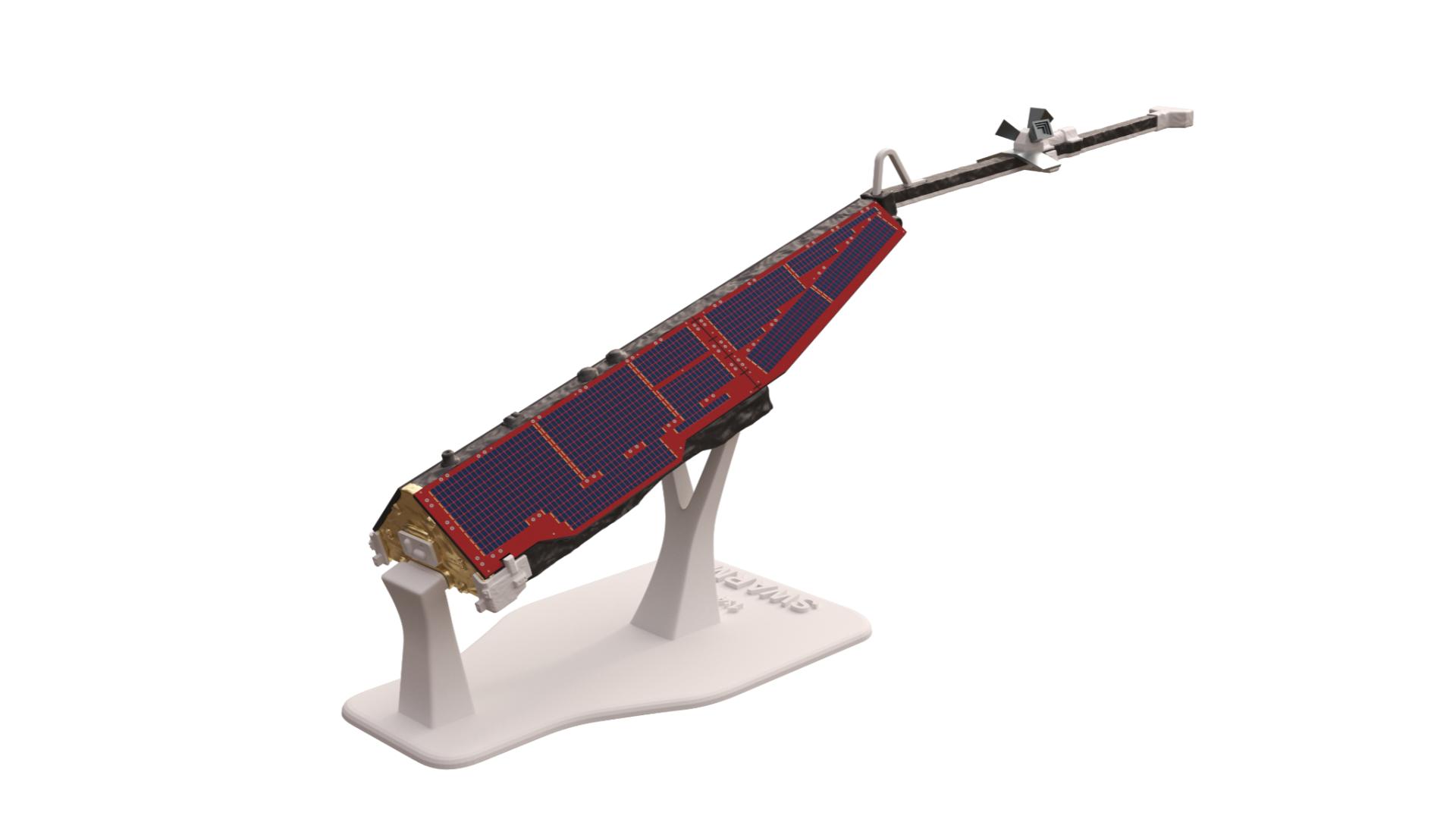
ESA’s Swarm satellite model.
Cryosat-2 Satellite
Cryosat-2, an ESA satellite, is designed to measure the height and mass of Earth’s glaciers and polar ice caps. Launched on April 8, 2010, from the Baikonur launch base in Kazakhstan, it orbits Earth at an altitude of around 717 km, completing an orbit every 94 minutes.
Cryosat-2 has a mass of approximately 1,400 kg and is equipped with a Short-Wave Radar Interferometric Altimeter (SIRAL). SIRAL sends electromagnetic waves towards the Earth’s surface, measuring the height of ice and snow through their reflection. The collected data is used to study how glaciers and polar ice are changing due to global warming, enabling predictions of future sea levels. Cryosat-2 is expected to have a lifespan of around 7 years.
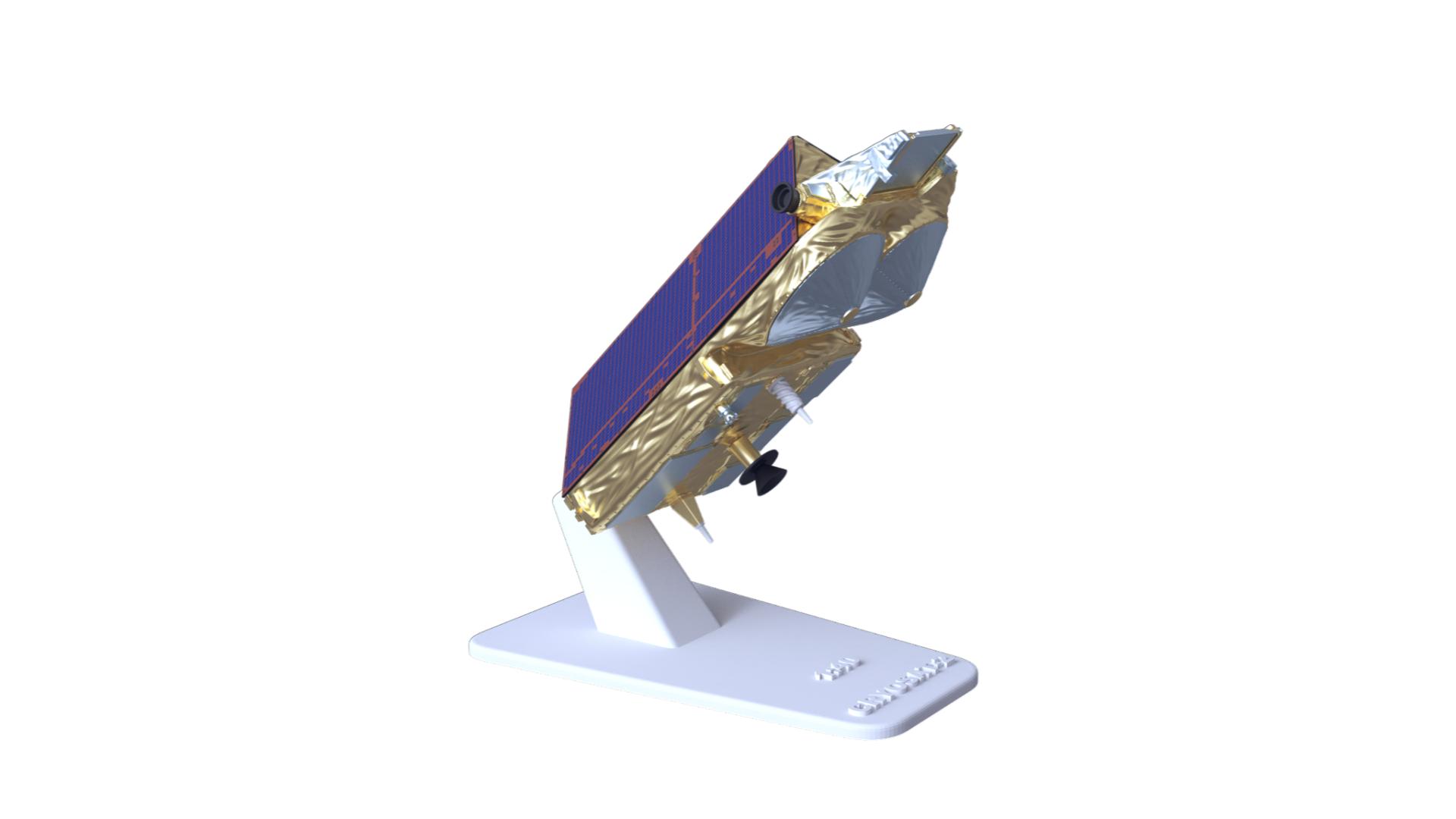
ESA’s Cryosat-2 satellite model.
Euclid Satellite
Euclid, an ESA satellite, is designed to study the distribution and movement of dark matter in the universe. Launched on July 22, 2021, from the Kourou launch base in French Guiana, it orbits around the Lagrange L2 point, approximately 1.5 million kilometers from the Earth on the opposite side of the Sun.
Dark matter is a type of matter that doesn’t emit light and cannot be directly detected, but it is believed to significantly influence the formation and movement of galaxies.
Euclid has a mass of approximately 1,500 kg and is equipped with two main scientific instruments: a visible camera and an infrared spectrometer. These instruments measure the light from millions of galaxies and galaxy clusters, allowing scientists to study the distribution and movement of dark matter across the entire universe indirectly. Euclid is expected to have a lifespan of around 6 years.
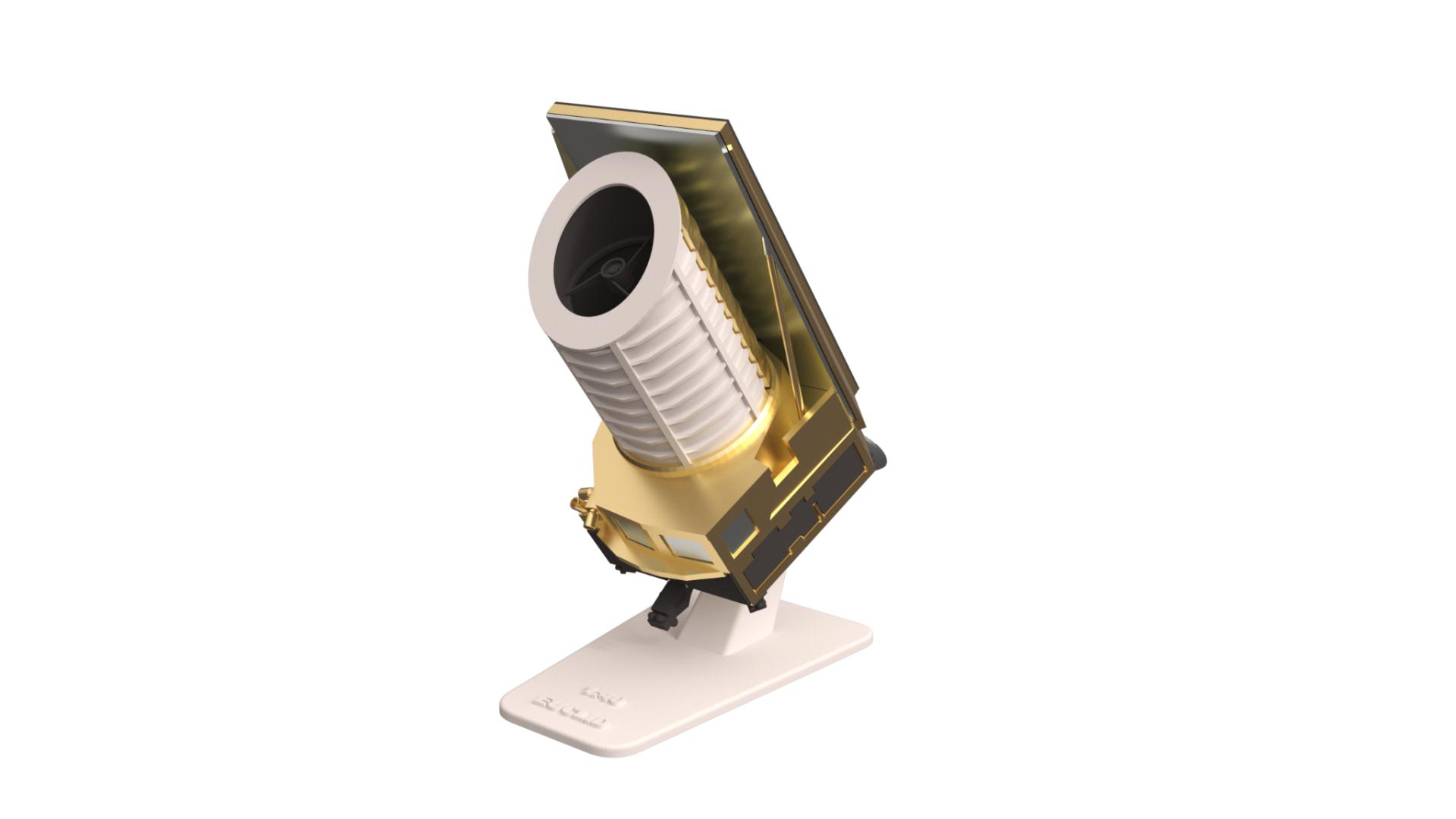
ESA’s Euclid satellite model.

